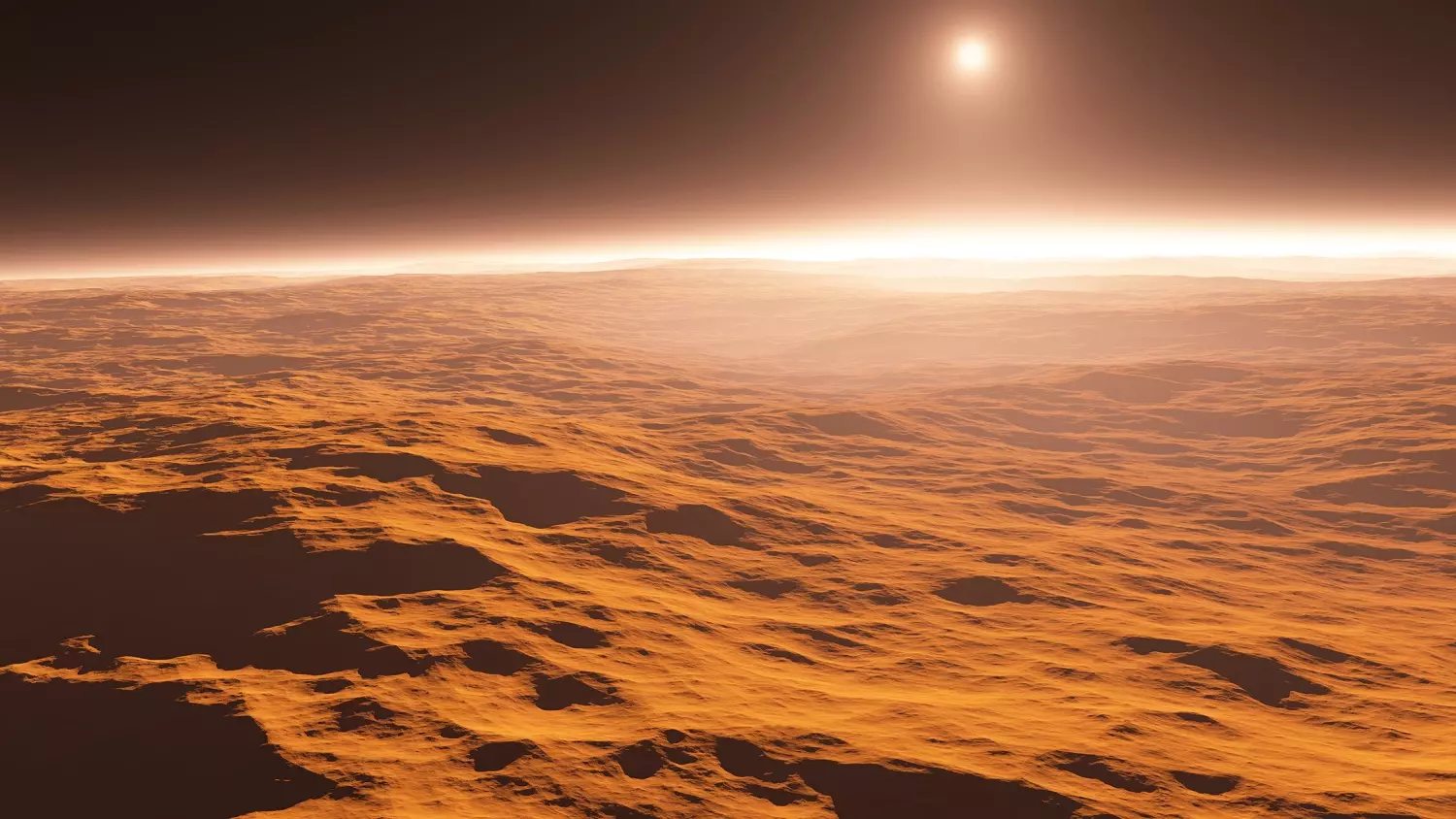[Originally published as the first part of Comets, Centaurs, and TNOs]
Some of the smallest members of our solar system have been known since antiquity. Comets were very mysterious objects to the ancient world. They had an unusual “long-haired” appearance, which is what the word “comet” means in ancient Greek. Unlike planets, comets seemed to follow no predictable path. They appeared at an unpredictable time, brightened and moved in unpredictable ways, and faded into oblivion. Many cultures considered comets to be omens.
Curiously, comets were originally considered to be an atmospheric phenomenon. This belief persisted until the appearance of the Great Comet of 1577 AD. Tycho carefully recorded the position of this comet at various times and found by parallax that the comet was therefore far more distant than the moon. For the first time, astronomers realized that comets were truly celestial, rather than meteorological.
Anatomy of a Comet
Advances in technology have allowed astronomers to learn a great deal about comets. Modern telescopes enable astronomers to discover and monitor comets long before (and after) they are visible to the unaided eye. Nine comets have been visited by manmade spacecraft, and we have learned much about their composition and properties.
A comet is a mass of ice and dirt that orbits the sun. They appear as a fuzzy “cloud” in the night sky, often with a tail or tails which point away from the sun.
Whereas planets have low eccentricity (and hence a fairly circular orbit), comets generally have a very high eccentricity—drawing a stretched out oval through their orbit. As such, they spend most of their time in the outer solar system, far from the warmth of the sun. At such distances, their icy material remains frozen.
However, when a comet swings through the inner solar system, solar energy vaporizes some of the icy material, which forms a cloud called a coma. Furthermore, solar wind and radiation stream away from the sun and press on the material ejected from the comet’s central nucleus. This is what causes the comet to have a tail that points away from the sun.
The nucleus of a comet—its central mass—is typically one to six miles in diameter.¹ When the Giotto spacecraft visited Halley’s comet in 1986, it obtained spectacular images of the nucleus, including spots of outgassing of the volatile material. Such material consists of ices, especially water-ice, along with frozen forms of ammonia, methane, and carbon dioxide. The dirt component consists mainly of silicates and some metals.
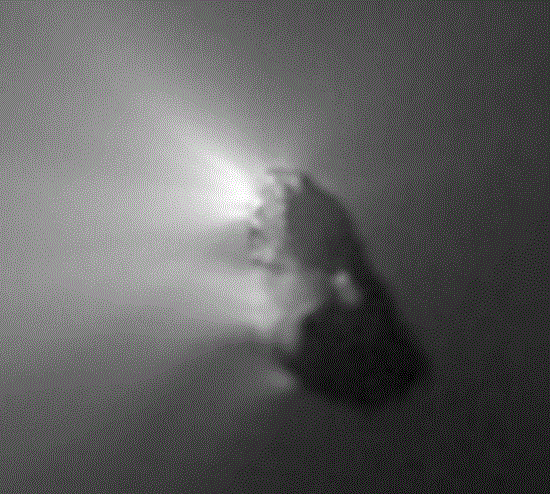
The small size of a comet’s nucleus would render most of them totally undetectable to the unaided eye if it were not for the comet’s activity. As a comet approaches the sun, the vaporization of the surface material forms a coma which can have a radius of up to 50,000 miles. Although the density of the material in the coma is very low, the coma reflects sunlight and makes the comet appear much brighter. As solar wind and radiation press on the material, a tail often develops. A comet’s tail can extend many millions of miles away from the nucleus. The tail points away from the sun regardless of the direction the comet is moving.

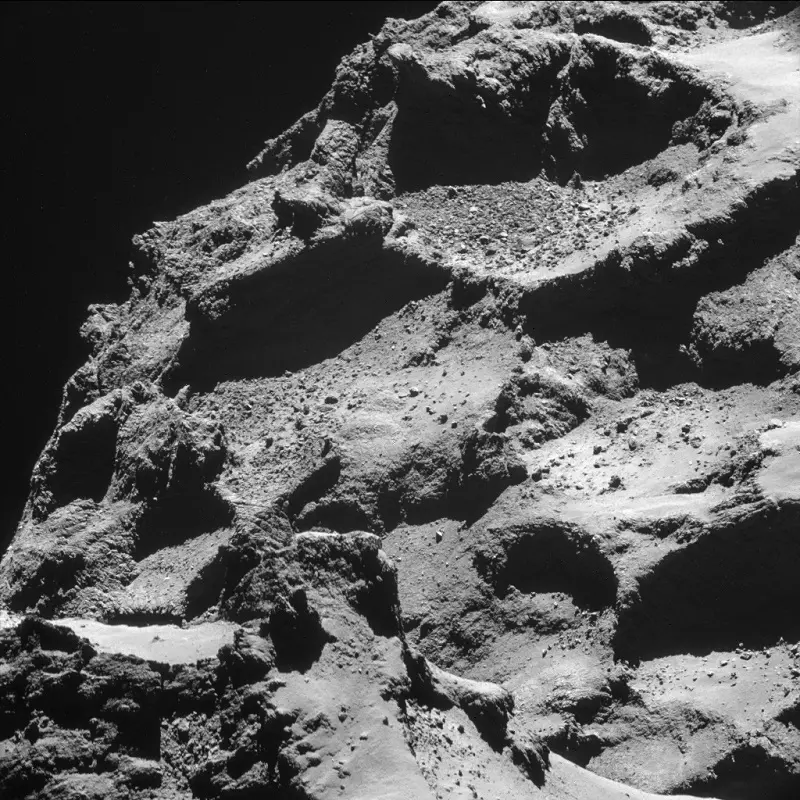
Typically, comets manifest two tails: a blue or blue-green ion tail (also called a plasma tail), and a yellow-white dust tail.² You can distinguish the two by color, and also by shape. The ion tail is always perfectly straight and points directly away from the sun. It is comprised of extremely small, charged particles that are repelled away from the sun by solar wind. The dust tail is made of larger particles which are influenced by solar radiation pressure, but assume their own orbit around the sun. For this reason, dust tails are generally curved and may point in a slightly different direction from the ion tail. In some cases, multiple dust tails can form.
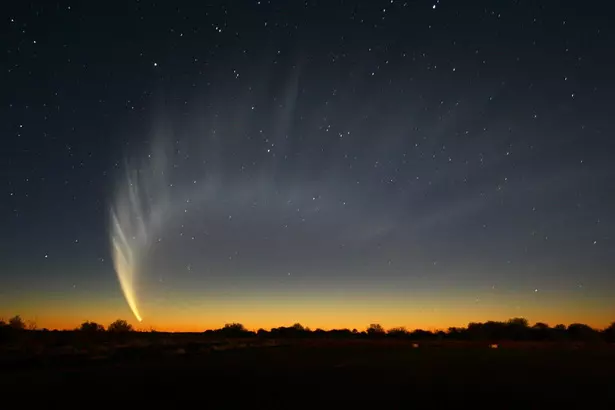
In some cases, only one of the two tails will be visible to the unaided eye. Comet Hyakatake, which made an extremely close pass to earth in 1996, had a spectacularly long ion tail. But its dust tail was not readily visible to the unaided eye. Conversely, when Comet McNaught graced the skies of the Southern Hemisphere in 2006-2007, any ion tail was obscured by the spectacular branching dust tail.
It is very hard to predict, especially for newly discovered comets, what kind of tail(s) will form, and how bright they will be. Some comets vastly exceed expectations, whereas others disappoint. Comets are notoriously unpredictable. It has been said that comets are like cats: they have tails and they do what they want.
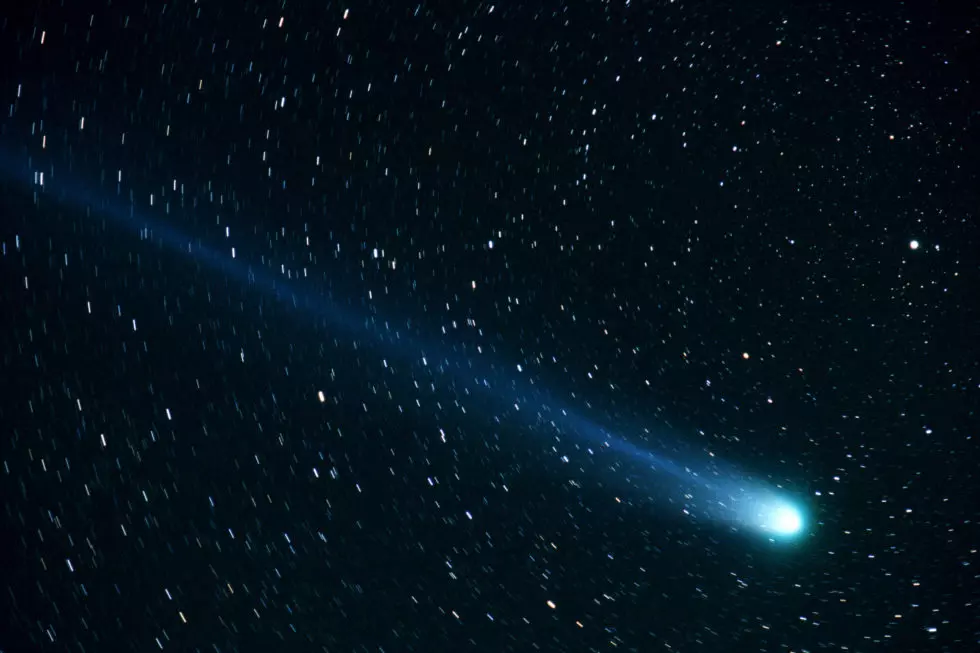
Unusual Orbits
Cometary orbits are unusual in two ways;
- they have very high eccentricities,
- and they also can have high inclinations.
The high inclination means that comets often do not orbit in the ecliptic—the same plane as the planets. Since the planets are all approximately in the same plane as the sun and moon, they only appear in certain constellations known as the zodiac. But comets can appear anywhere in the sky.
The highly elliptical nature of a comet’s orbit makes sense.
If a comet had a circular orbit close to the sun, its constant exposure to solar heat and radiation would cause the comet to quickly exhaust all of its volatile material into space, and it would rapidly disappear. Conversely, if a comet had a circular orbit far from the sun, it would never receive enough solar heat to develop a coma or a tail, and would not be classified as a comet. In fact, it would be very hard to detect. An elliptical orbit allows a comet to spend most of its time protected in the cold depths of the outer solar system, only to occasionally dazzle the sky of earth.
Comets are classified into one of two categories based on their orbit. Short-period comets are defined as those which take 200 years or less to orbit the sun. They tend to have lower orbital inclinations and often orbit close the ecliptic. They are usually prograde—orbiting in the same direction as the planets. But there are exceptions. Halley’s comet is a short period retrograde comet with a 76-year period.
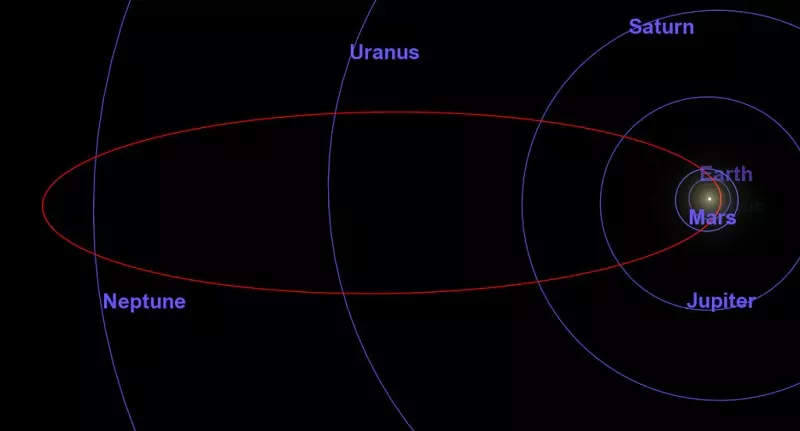
Long-period comets are defined as those with an orbital period greater than 200 years. They have no preferred inclination, and are just as likely to be retrograde as prograde. They have an eccentricity very near 1, which is the limit for a closed orbit. Comet Hale-Bopp which visited the inner solar system in 1997 is a wonderful example of a long-period comet. It has made only one complete orbit around the sun since creation.³ The last time it visited the inner solar system, it was likely seen by Noah.
During a pass through the inner solar system, the orbital parameters of a comet can be affected by the gravity of the other planets, changing its period and eccentricity. Sometimes the eccentricity of a long-period comet is increased so that it exceeds 1. In such a case, the orbit is no longer closed. The comet is ejected from the solar system on a hyperbolic trajectory, never to return.
Footnotes:
- Hale-Bopp has an exceptionally large nucleus that is estimated to be between 19 and 25 miles in diameter. Hale-Bopp also broke the record for longevity. It is the only comet in recorded history to have remained visible to the naked eye for over a year and a half. That’s over twice as long as the previous record held by the Great Comet of 1811.
- Occasionally, a comet will possess a third “sodium” tail. However, this third tail is normally much fainter than the ion and dust tails, and is nearly impossible to detect in standard images.
- The orbit of Hale-Bopp was altered by gravitational perturbations of the planets during its trip through the inner solar system in 1997. Its previous orbital period was around 4200 years, and its new orbital period is around 2533 years.





